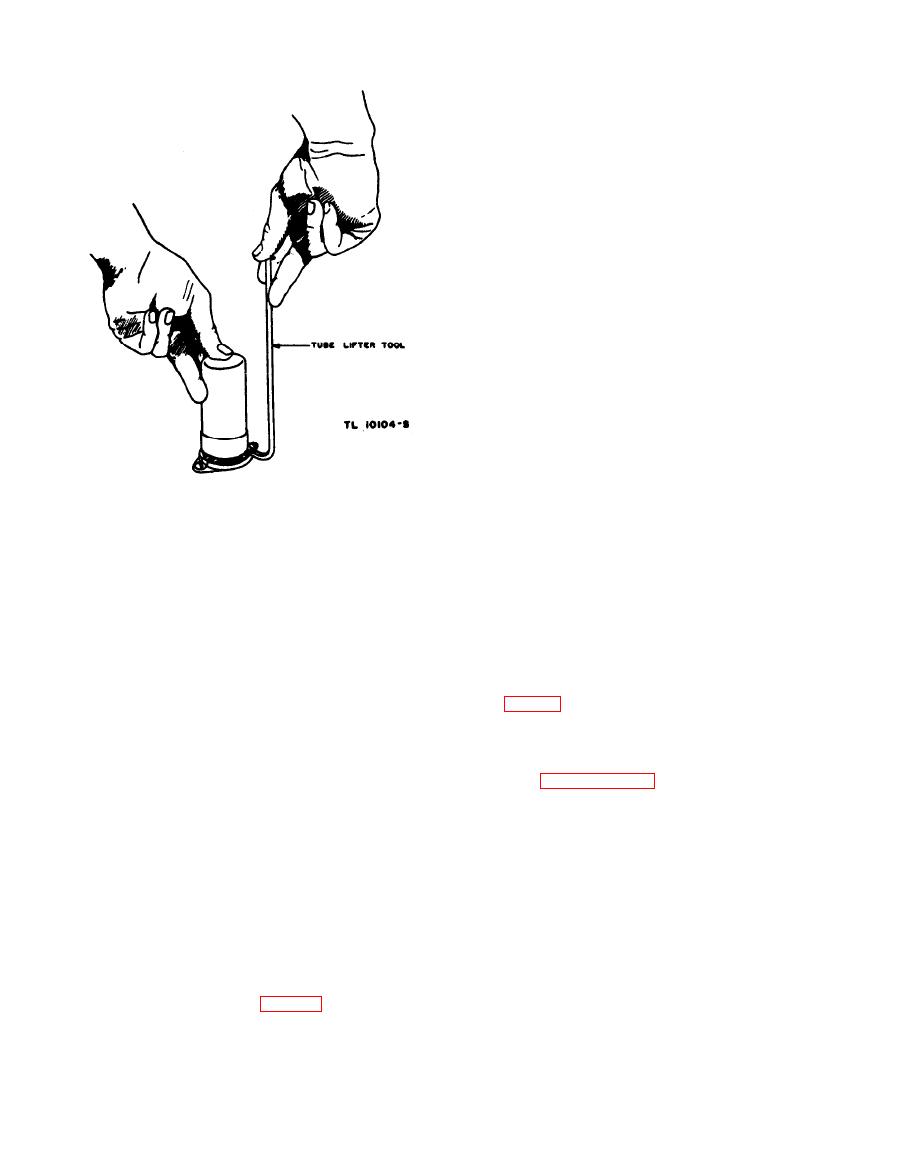
(d) A carelessly soldered connection may
create a new fault. It is very important
to make well-soldered joints; a poorly
soldered joint is one of the most
difficult faults to find.
(e) When a part is replaced, it must be
placed exactly as the original. Give
particular attention to proper ground-
ing when replacing a part. Use the
same grounds in the original wiring.
Failure to observe these precautions
may result in decreased gain or oscilla-
tion of the circuit.
for Shorts
a. Filament and B+ voltages are supplied
to the transceiver by Rectifier Power Unit
PP-86(*)/TXC-1 through a 12-connector Jones
plug. If there is no B+ or filament voltage in
the transceiver, it is likely that the trouble lies
in the rectifier power unit. This may be due to a
faulty rectifier tube, an open filter choke, or a
c. Whenever the equipment is serviced, observe
shorted filter capacitor. Operating selector switch
the following precautions very carefully:
S1 will aid in determining the circuit at fault.
(1) Be careful when the transceiver cover is
The schematics, the parts identification figures,
removed; dangerous voltages are exposed.
and the wiring diagrams of Rectifier Power Unit
(2) Careless replacement of parts often makes
new faults inevitable. Note the following
PP-86(*)/TXC-1 and the transceiver will help
points:
to trace the trouble.
(a) Before a part is unsoldered, note the
b. A trouble in any circuit will be noticed when
position of the leads. If the part, such
following the operating procedures. These troubles
as a transformer, has a number of
will be indicated in the equipment performance
connections, tag each of the leads to it.
check list (par. 58). Normally, use of this pro-
(b) Be careful not to damage or disturb
cedure will narrow down the trouble to a section
other leads by pulling or pushing them
of the transceiver or power supply. Most of the
out of the way.
checking can be accomplished from the bottom
(c) Do not allow drops of solder to fail
of the chassis. Paragraphs 101 and 121 describe
into the set; they may cause short
the power supply.
circuits.
Section Il. TROUBLE ANALYSIS
is described where applicable. General conditions
for signal tracing, unless otherwise directed, are:
To determine whether a circuit is performing
a. Set turned on.
in accordance with the requirements, it is necessary
b. Motor running.
to measure the signal voltages and, in some cases,
c. Input signal sufficient to cause a +2-db
to observe the waveforms at various points, using
reading on DB METER.
an oscilloscope and a vacuum-tube voltmeter.
d. Selector switch on one of the recording
positions.
Use of signal-tracing charts (figs. 74 through 81)


